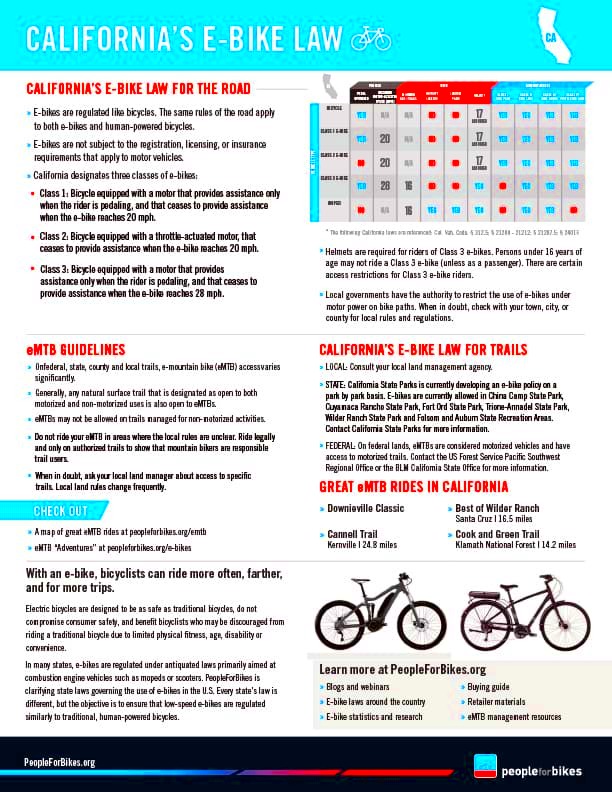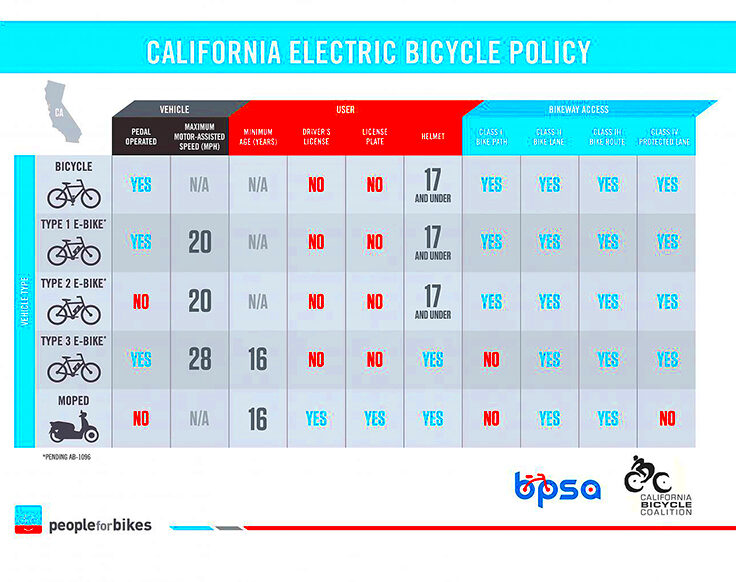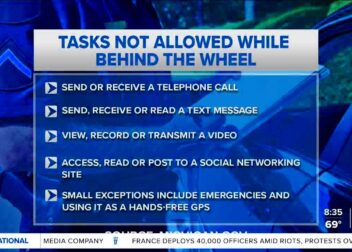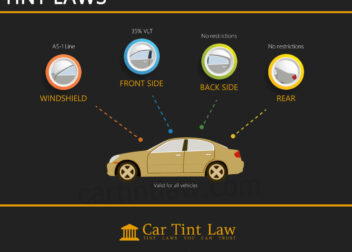A Guide to Oklahoma E-Bike Laws and Their Regulations
Oklahoma has readily absorbed the explosion in e-bikes. These laws are meant to provide a secure and pleasant atmosphere for the rider while still keeping pace with the rise in e-bike popularity. If you enjoy riding your bike or you are trying out this form of transport, it is important to understand all rules so as to be safe and comply with them.
Defining E-Bikes in Oklahoma

Oklahoma defines e-bikes as bicycles that have a motor that helps its user pedal. The following are the main definitions of an e-bike:
- Pedal-Assist Feature: The motor engages only when the rider pedals.
- Power Limit: The motor must not exceed 750 watts (1 horsepower).
- Speed Capability: E-bikes can typically assist speeds up to 20 mph on flat terrain.
The reason why this definition is important is that it sets e-bikes apart from normal bikes and motor scooters, which may be governed by different rules.
Categories of E-Bikes and Their Classifications
Oklahoma categorizes e-bikes into three broad types, each of which has its own set of rules and regulations:
| Class | Description | Regulations |
|---|---|---|
| Class 1 | Pedal-assist only; motor assists only while pedaling. | Allowed on all bike paths and lanes. |
| Class 2 | Throttle-assisted; motor can provide power without pedaling. | Allowed on bike paths but may have restrictions on multi-use paths. |
| Class 3 | Pedal-assist with a higher speed limit (up to 28 mph). | Restrictions on certain paths; helmet required for riders under 16. |
Grasping these types is crucial for compliance with local legislation. Before going out for a drive always ensure you understand different biking organizations by consulting your local official rules, because some regions might be particular about the areas within which bicycles of every classification can be used.
Where You Can Ride E-Bikes in Oklahoma
Understanding where you can use your e-bike is equally critical to comprehending its regulations. E-bike cyclists in Oklahoma have various roads and trails that are appropriate for them. Below are some important things that you should be aware of, whether you are commuting or simply taking a break ride.
In most cases, e-bikes are permitted on:
- Bicycle Paths: Most bicycle paths are open to all classes of e-bikes. These paths provide a safe space for riders away from vehicle traffic.
- Multi-Use Trails: Many trails designated for pedestrians, cyclists, and other non-motorized users allow e-bikes. However, check for specific regulations as some trails might restrict Class 3 e-bikes.
- Roadways: E-bikes can typically be ridden on public roads, following the same traffic rules as traditional bicycles. Make sure to stay as close to the right edge of the road as possible.
Nevertheless, it must be acknowledged that bicycles powered by electricity can at times be banned from certain tracks reserved only for pedestrians. Always check the nearby signs and local laws in order to avoid penalties or risking your life.
Safety Regulations for E-Bike Riders
While riding an e-bike is an enjoyable as well as environmentally friendly means of transportation, it must be made clear that safety should always come first. Specific Oklohoma laws concerning riding are aimed at ensuring the safety of all cyclists in order to promote their fun-filled journeys.
Among the crucial safety rules for e-bikes riders include the following:
- Helmet Use: While it’s not mandatory for all ages, wearing a helmet is highly recommended for safety. Riders under 16 are required to wear a helmet.
- Lighting: If you ride at night, ensure your e-bike has a front white light and a rear red reflector or light. Visibility is crucial!
- Reflective Gear: Wearing bright or reflective clothing can help others see you, especially during low-light conditions.
If you adhere to all these measures for safety, your journey would be secure with less chances of accidents thus making it enjoyable.
Age Restrictions and Requirements for E-Bike Use
The main concern of e-bike legislation in Oklahoma is protecting children against the hazards associated with riding them, which is why they have included age limitations. The following are some things that you need to be aware regarding age prerequisites for using e-bikes.
In the state of Oklahoma:
- Minimum Age for Riding: There is no specific minimum age to ride an e-bike, but riders under 16 must wear a helmet.
- Age for Class 3 E-Bikes: Riders under the age of 16 are prohibited from riding Class 3 e-bikes, which can reach speeds up to 28 mph.
- Parental Supervision: It is advisable for younger riders to be supervised by an adult, especially when riding on busy roads or unfamiliar paths.
In addition to this, parents ought to teach their children on safety measures while riding including how to use an e-bike and obey traffic regulations. By knowing these age limitations, everyone’s ride becomes safer.
Important Equipment and Maintenance Guidelines
Maintaining your e-bike is not only about aesthetics; you also have to guarantee that it functions appropriately. Proper upkeep and gear can make a world of difference in the quality of ride you enjoy as well as the longevity of your cycle. Below are important pointers to remember.
To begin with, let us discuss about the necessary equipment:
- Helmet: Always wear a helmet that meets safety standards. It’s your first line of defense in case of an accident.
- Lights: Invest in high-quality front and rear lights. This is crucial for visibility, especially if you ride at night.
- Reflectors: Make sure your bike has proper reflectors to help others see you on the road.
- Lock: A sturdy lock is vital to protect your investment when you park your bike.
Now it is time we discuss about keeping it up. If regular checks are made, many problems can be averted in future:
- Battery Care: Follow the manufacturer’s guidelines for charging and storing your battery to maximize its lifespan.
- Tire Pressure: Regularly check and maintain your tire pressure for a smoother ride and better performance.
- Brake Inspection: Keep your brakes in good working condition. Regularly check the brake pads and cables for wear.
- Chain Lubrication: Lubricate your chain regularly to ensure smooth gear shifts and prevent rust.
While using these devices and preservation instructions, you will not only maintain your e-bike in good condition but also improve your general riding experience.
FAQ About Oklahoma E-Bike Laws
Because of their rising favor, various inquiries regarding their lawful standing and rules emanate. In order to help solve ambiguities regarding e-bike laws in Oklahoma, this article will provide answers to frequently raised questions.
- Are e-bikes allowed on sidewalks? It depends on local regulations. Many areas allow it, but it’s essential to check local laws.
- Do I need a license to ride an e-bike? No, you do not need a license to operate an e-bike in Oklahoma.
- Can I modify my e-bike? Yes, but ensure any modifications comply with state regulations, particularly regarding motor power and speed limits.
- What should I do if I encounter an issue with law enforcement regarding my e-bike? Stay calm, and inquire about the specific violation. Knowing your rights can help you address any misunderstandings.
While these FAQs highlight some universal queries, it is generally advisable to seek out information from local legislation in order to be certain of its correctness and timeliness.
Conclusion on E-Bike Regulations in Oklahoma
Amidst these types of current bicycles, understanding bicycle regulations in Oklahoma is essential to those who wish to enjoy using them as a mode of transportation. The place you can cycle may differ from one state to another and so does riding safety measures; therefore, knowledge will lead to an enjoyable experience.
It’s easy to see how e-bikes can be a great commuting option, they are perfect for fitness and exploration. To fully leverage the advantages of e-bikes while creating a more secure environment for other road users, you should observe local regulations and adhere to proper behavior. Thus, take your cycling shoes on, go slow but safe, and ride with joy!


